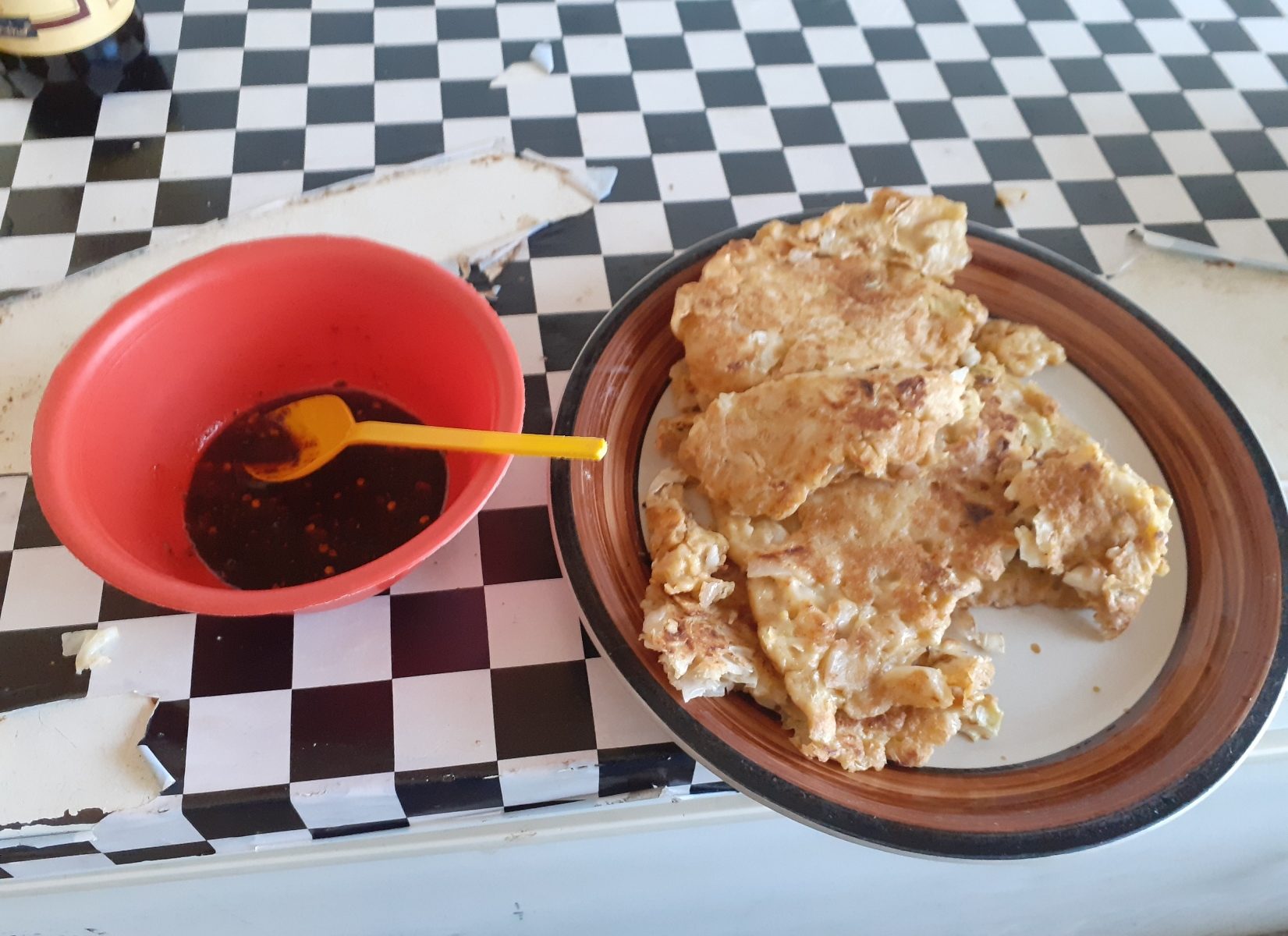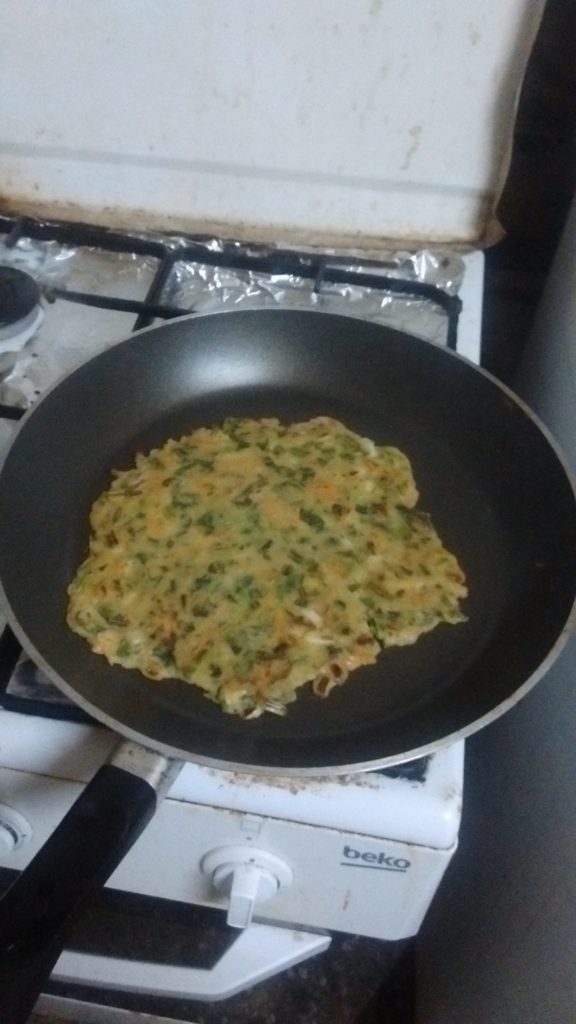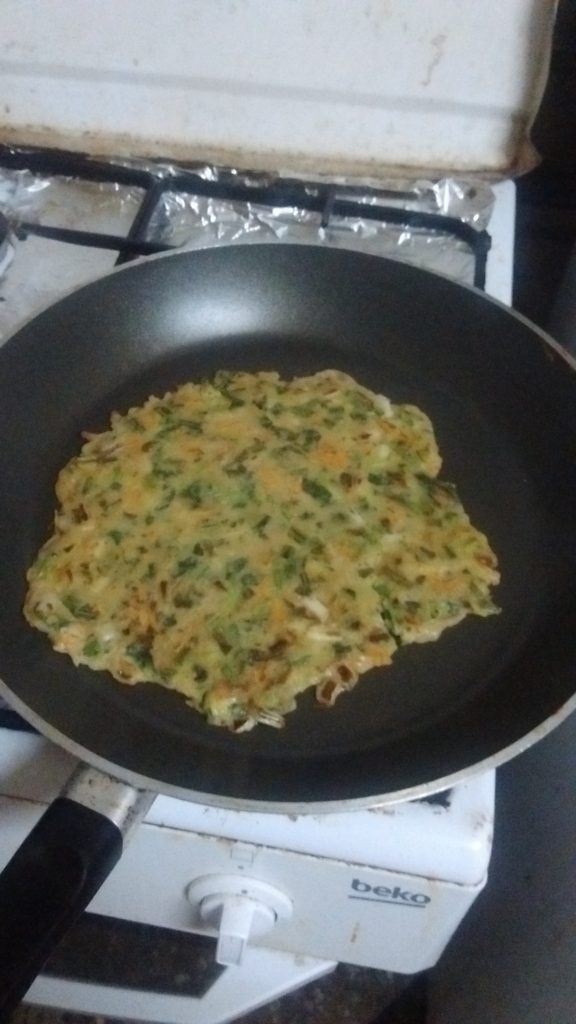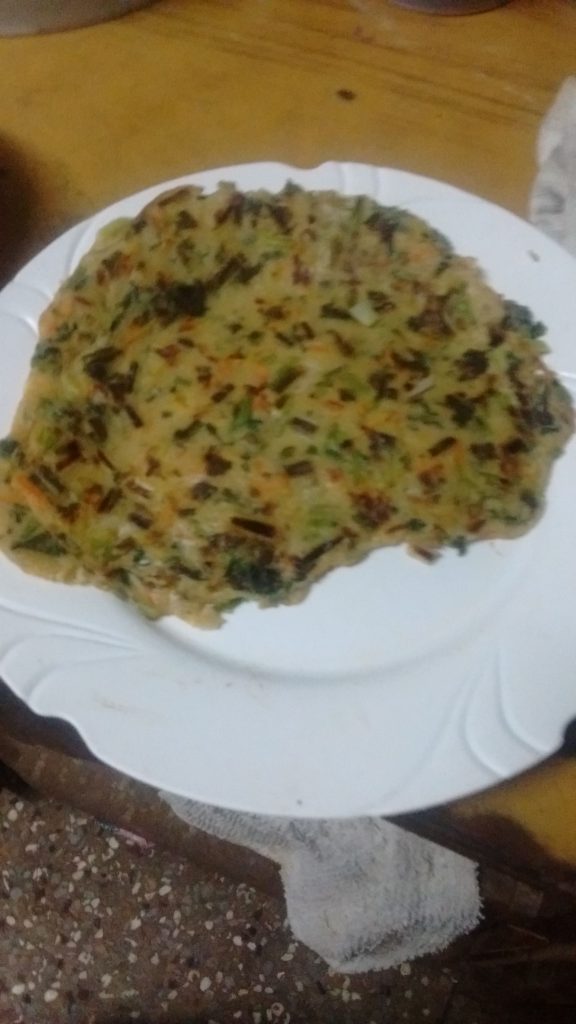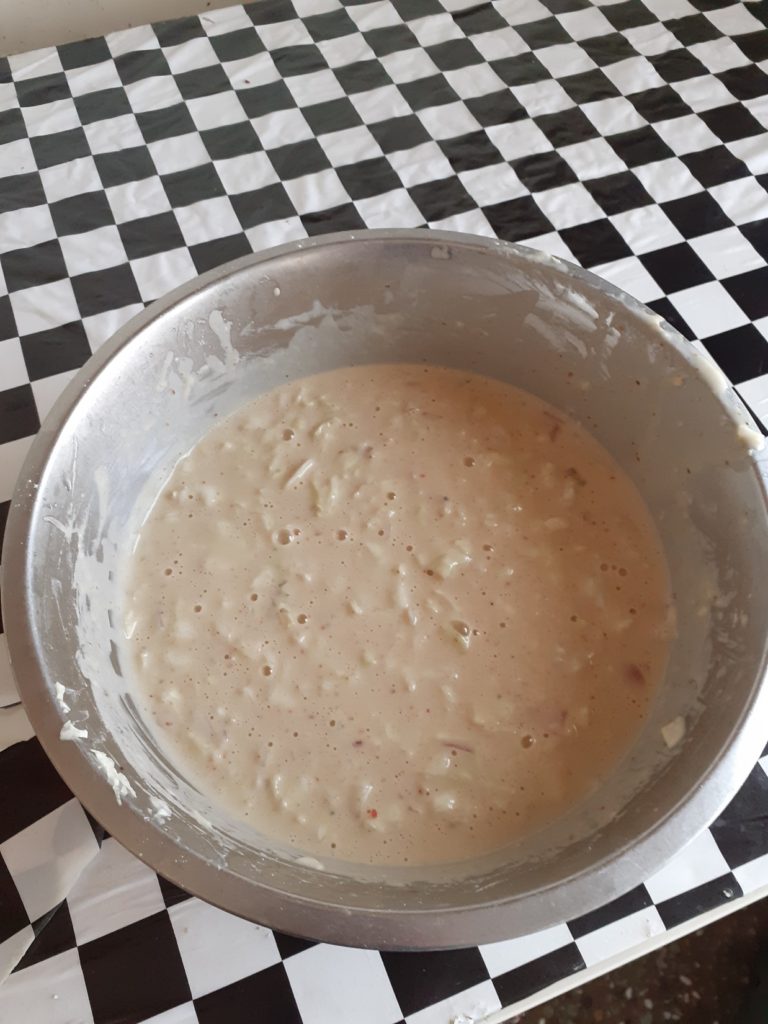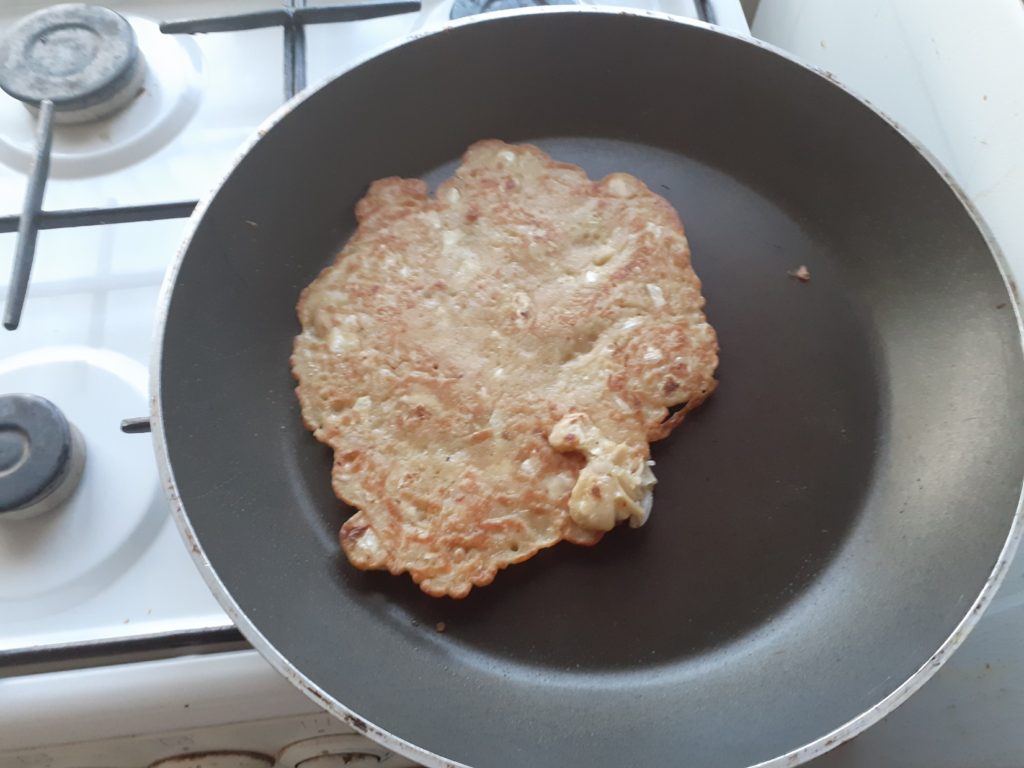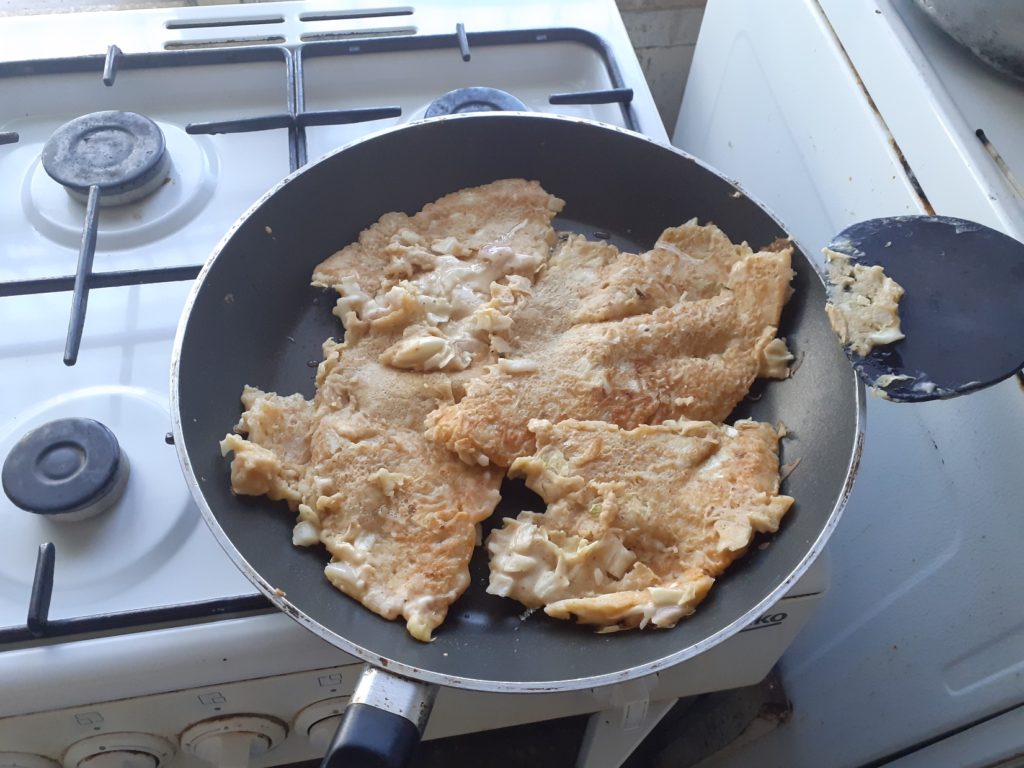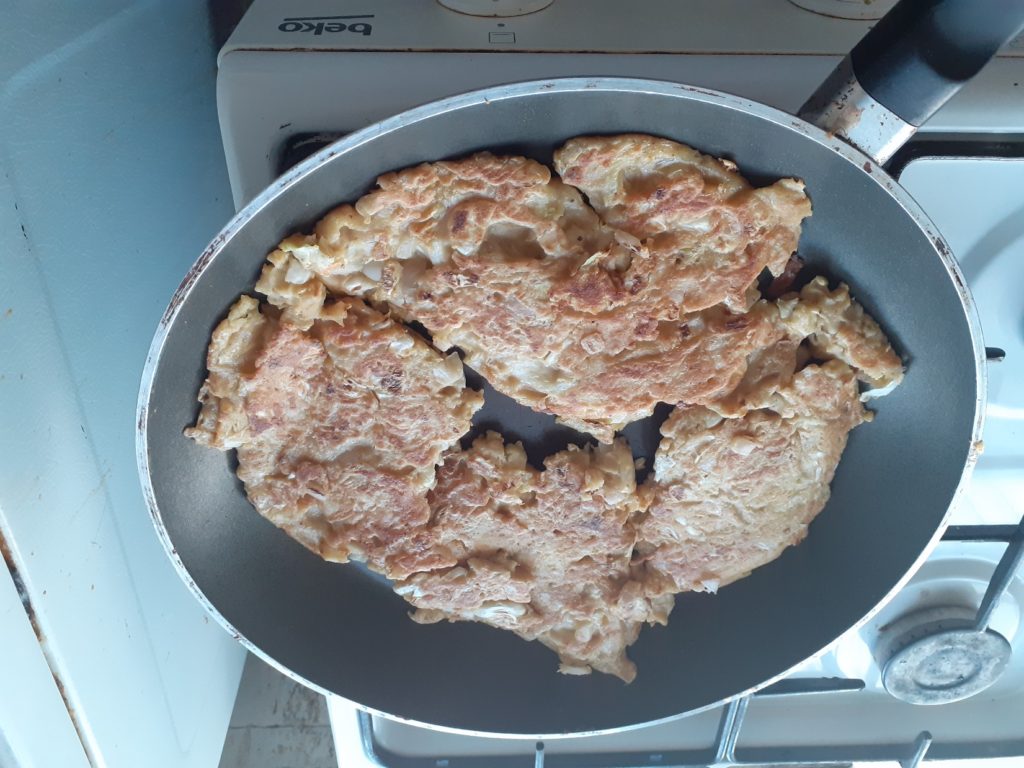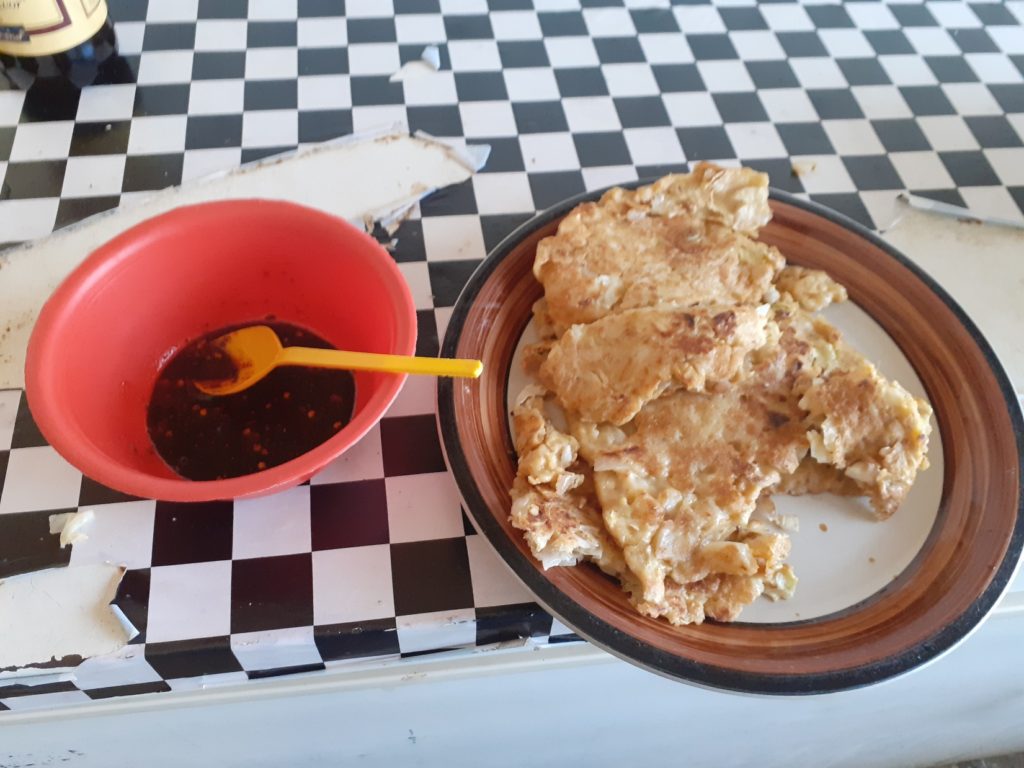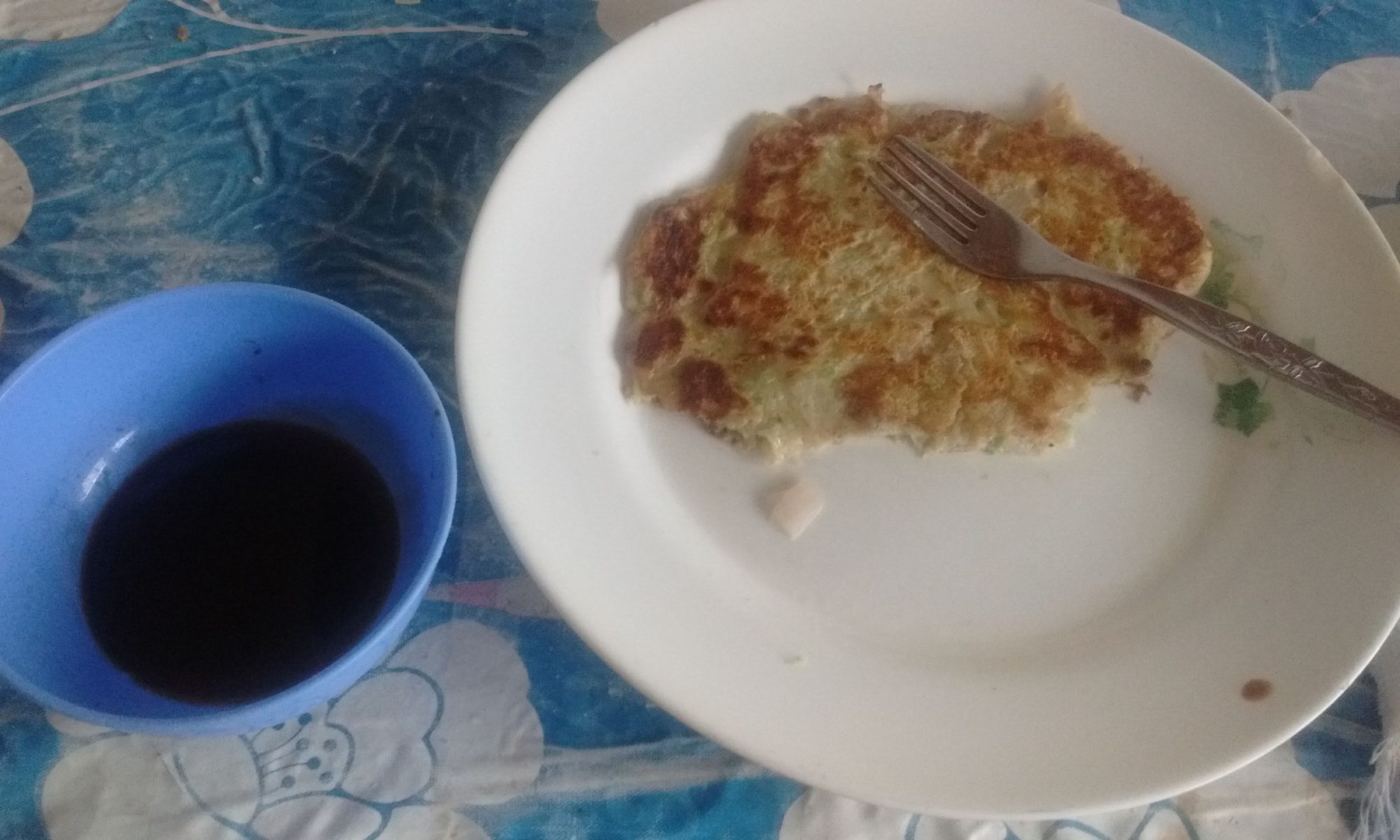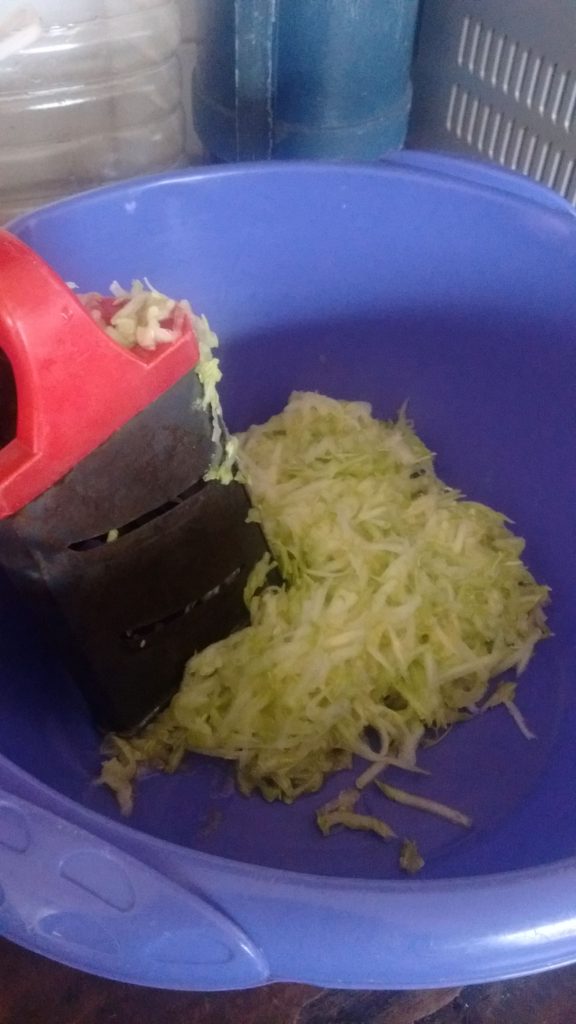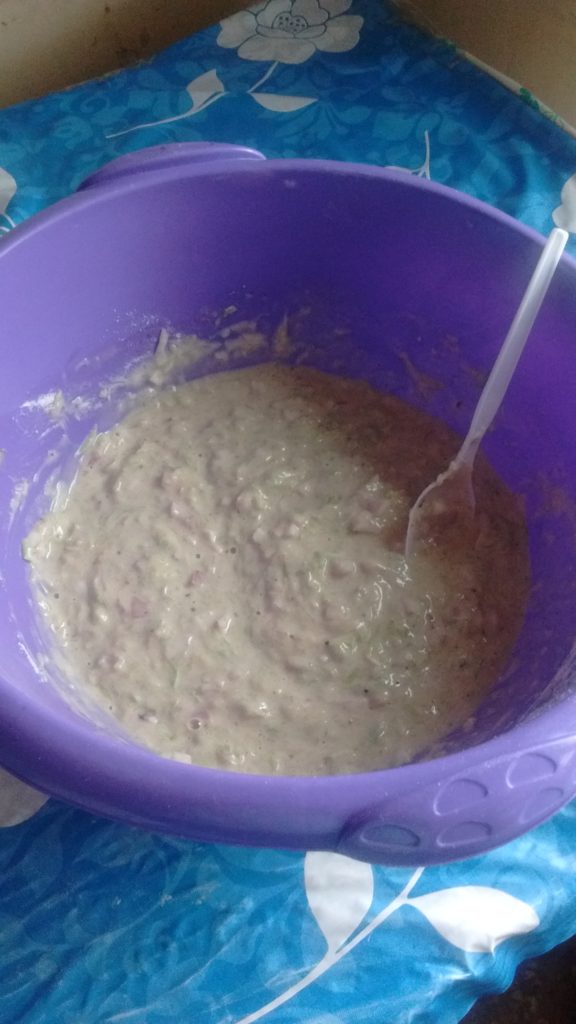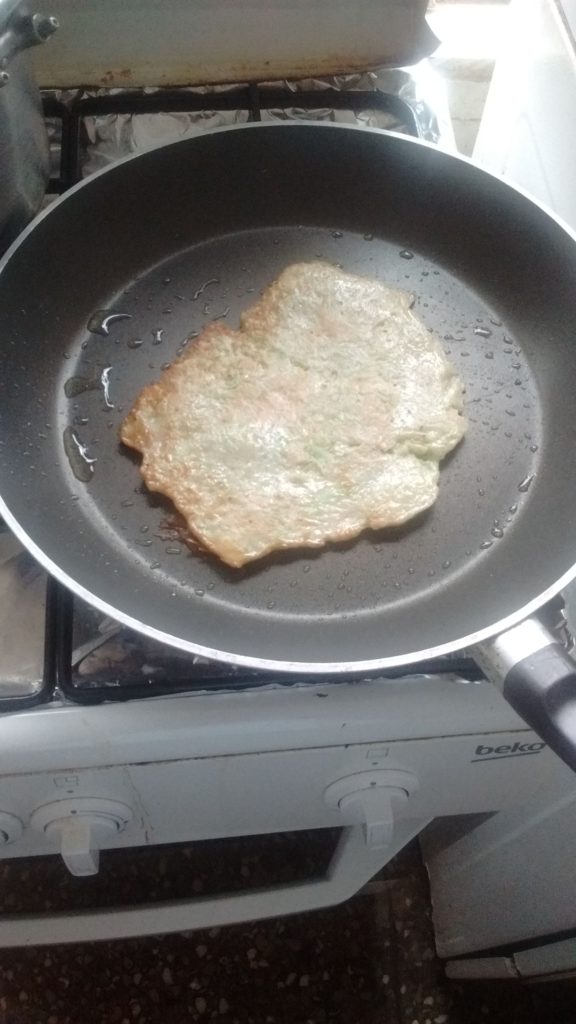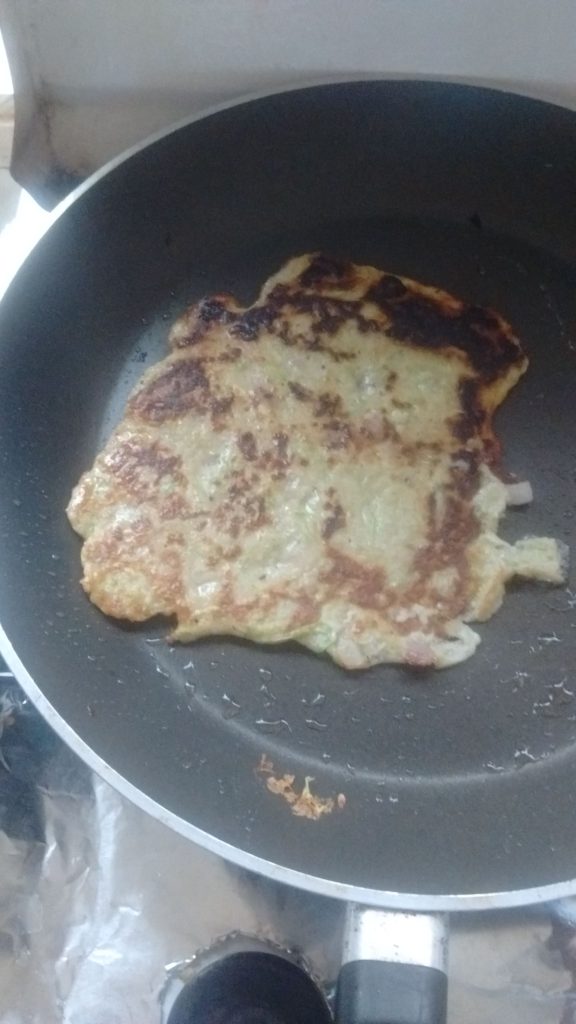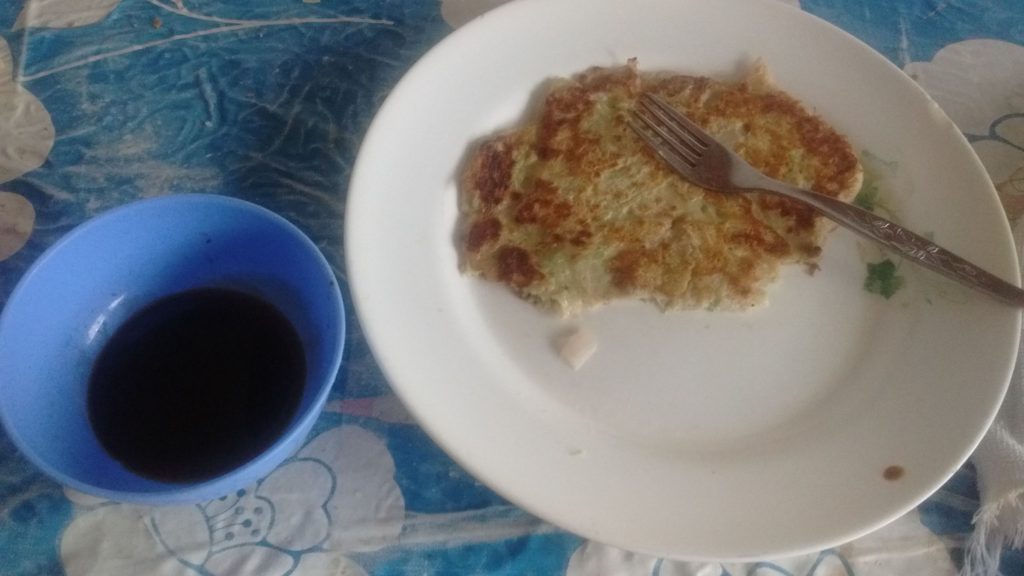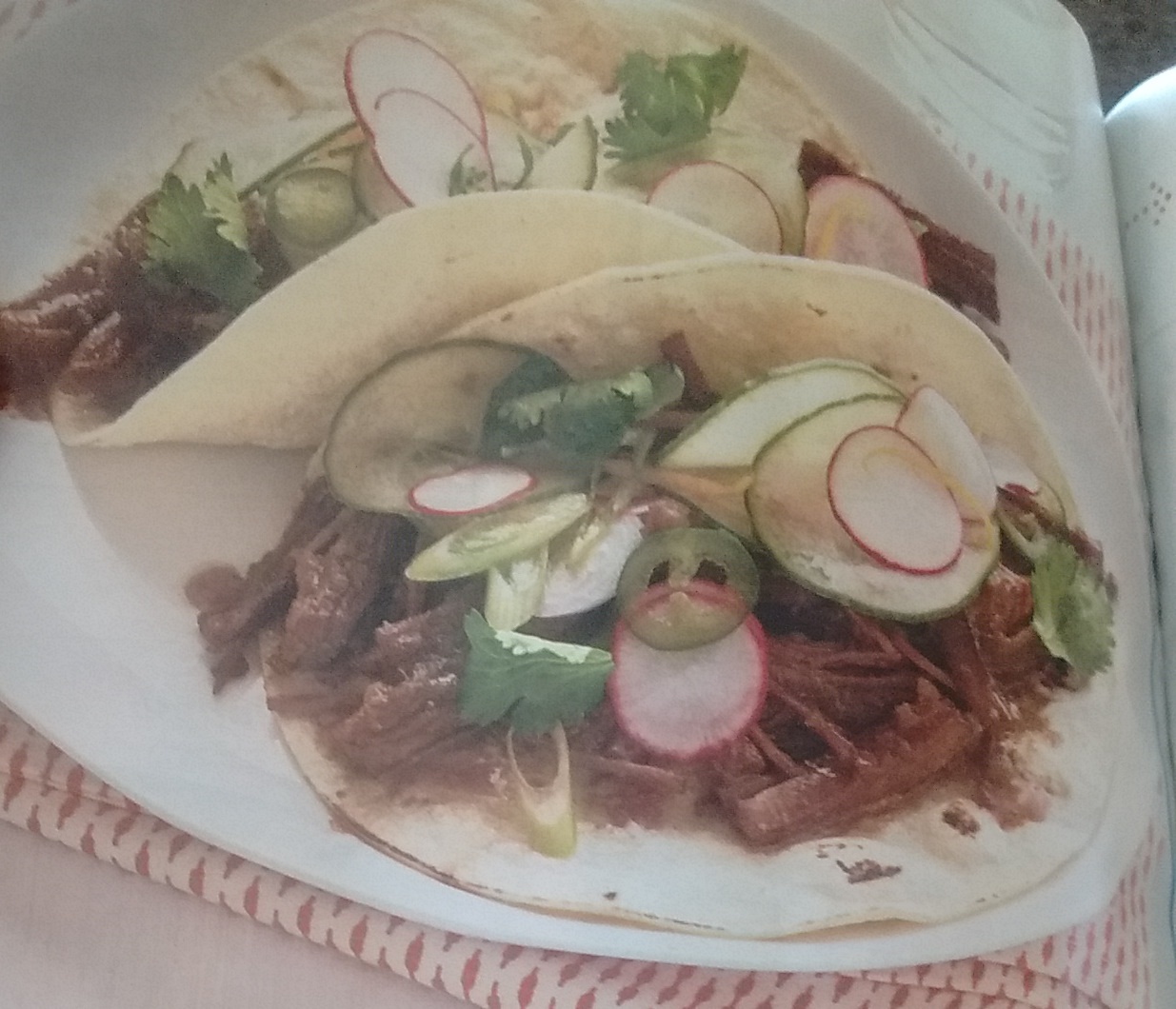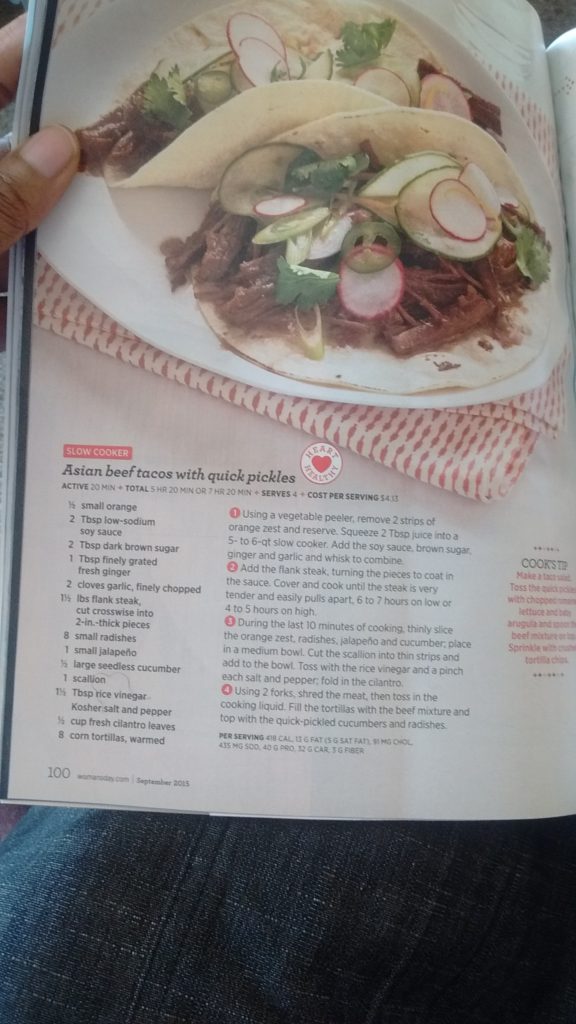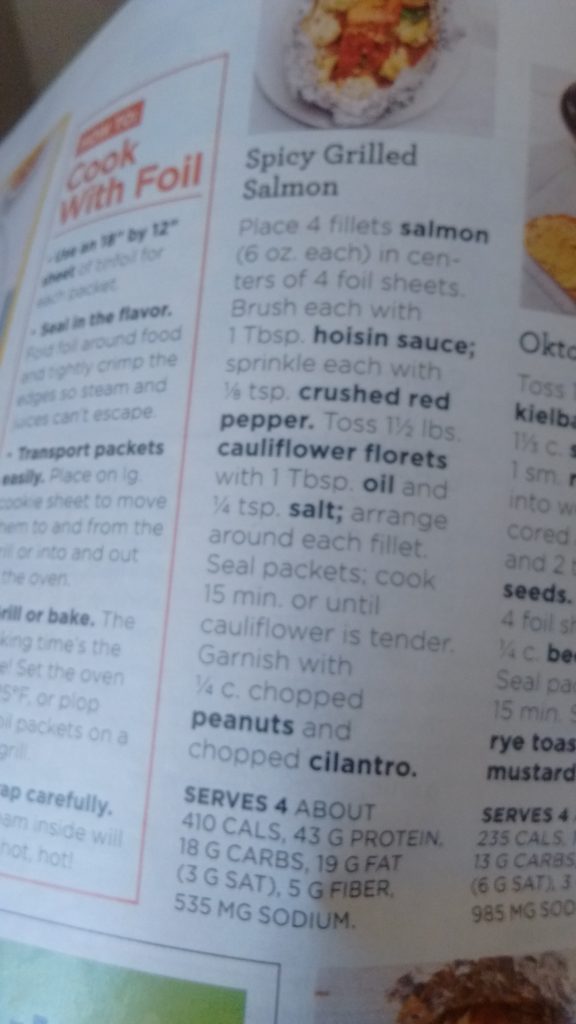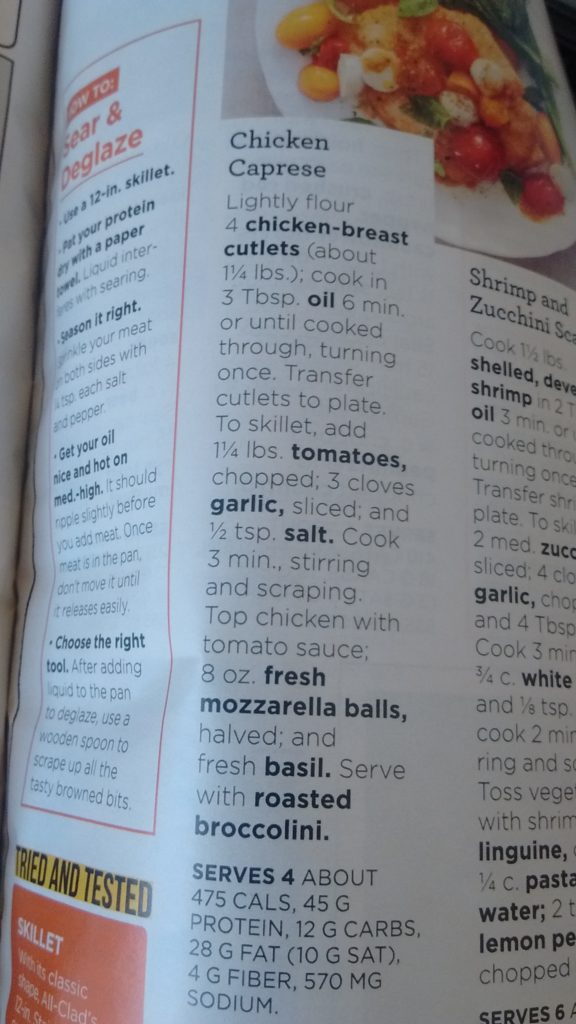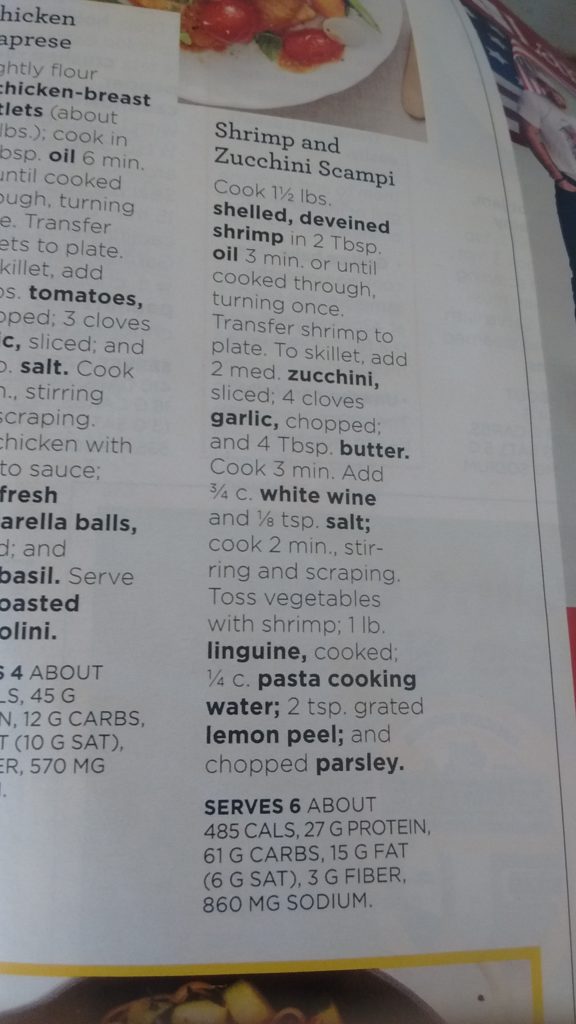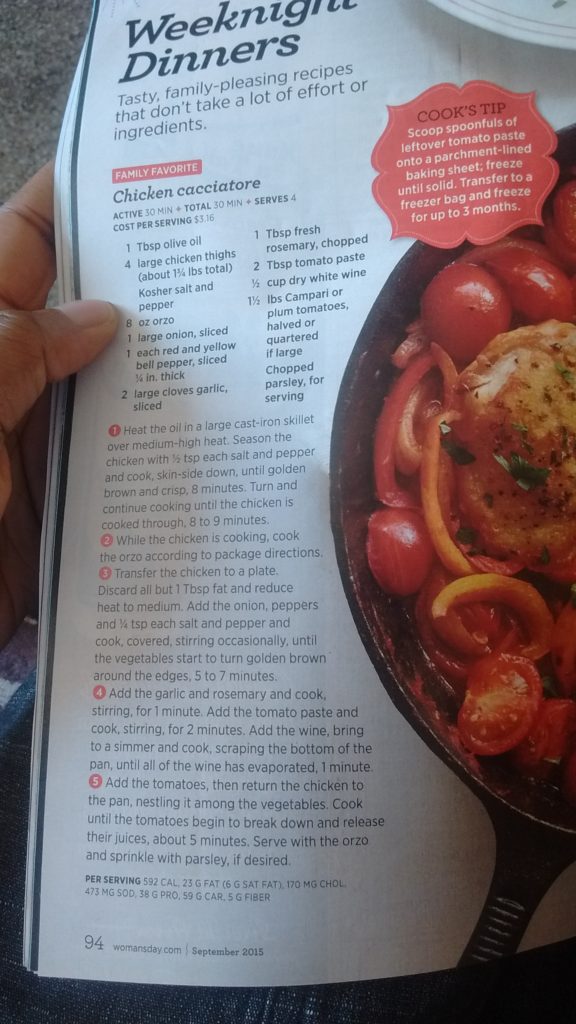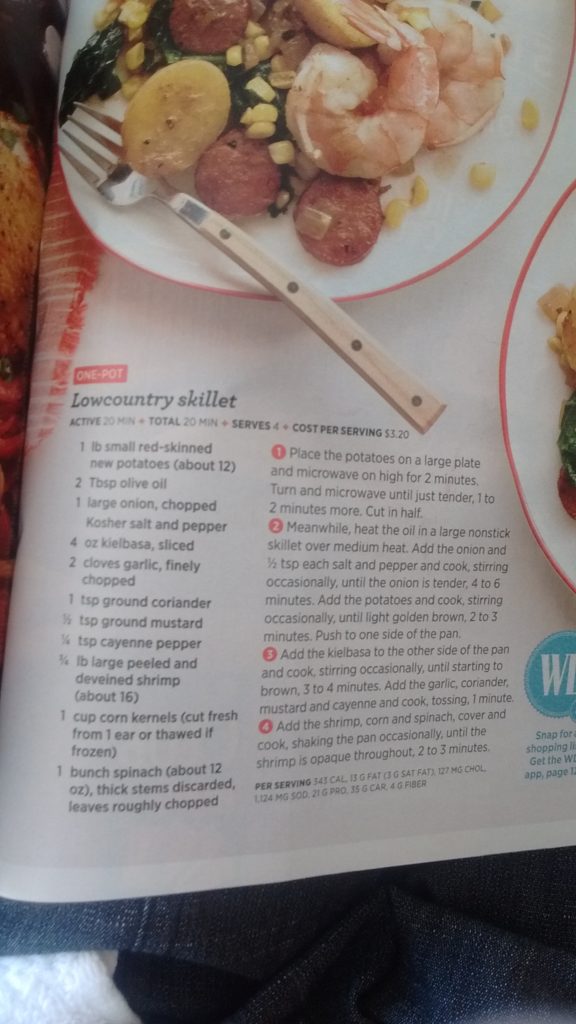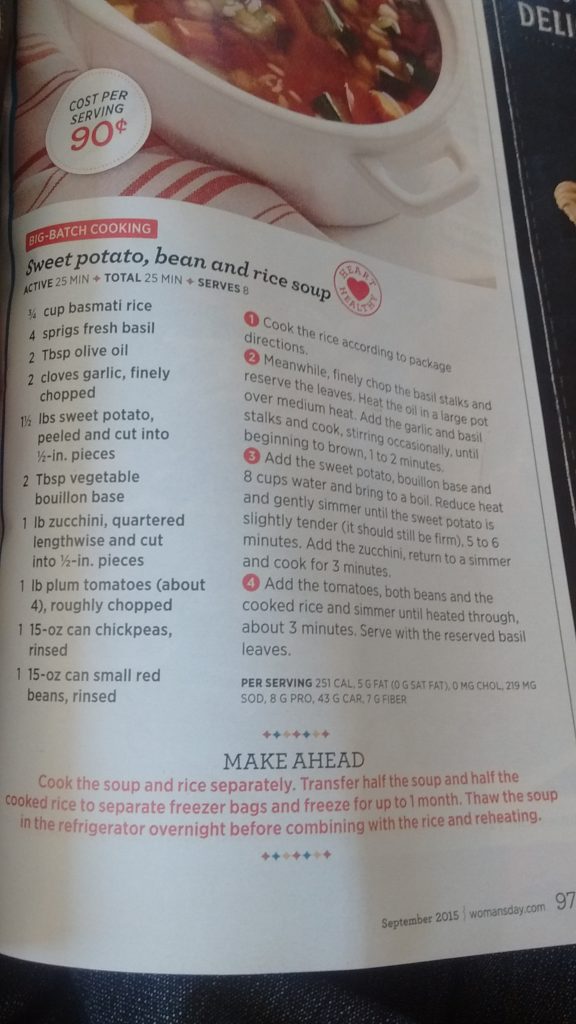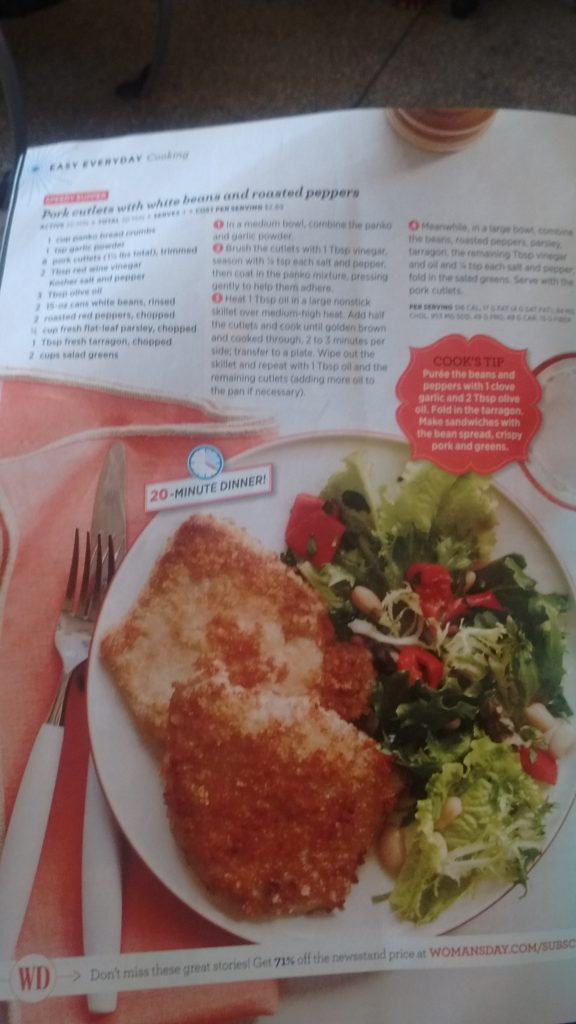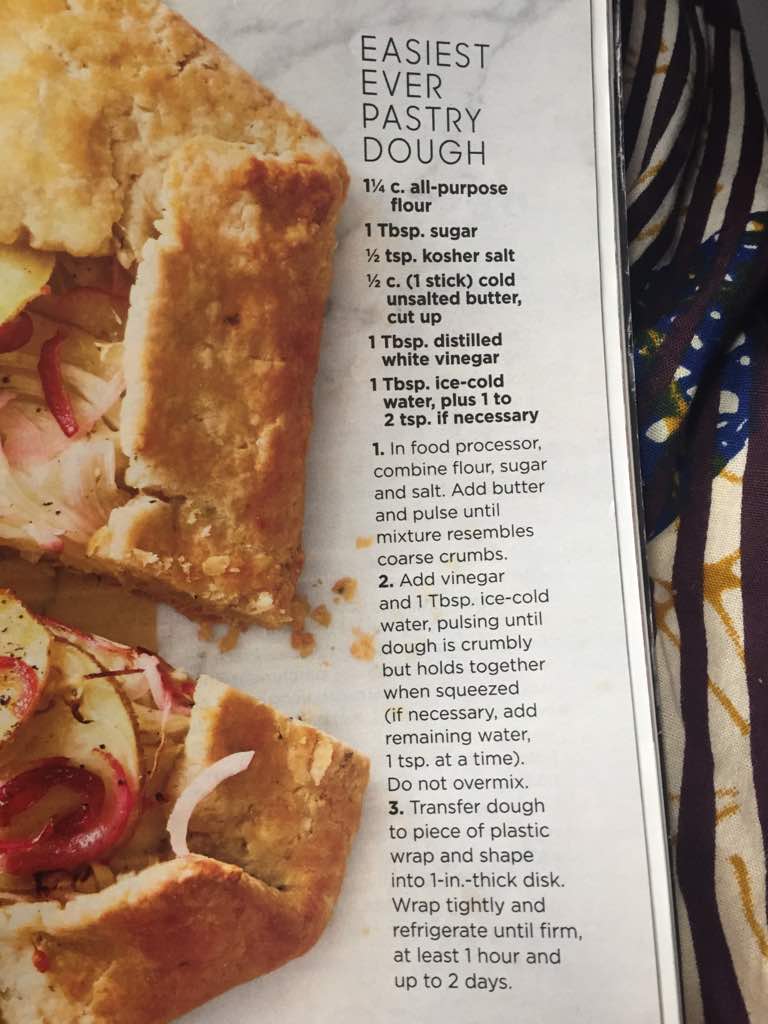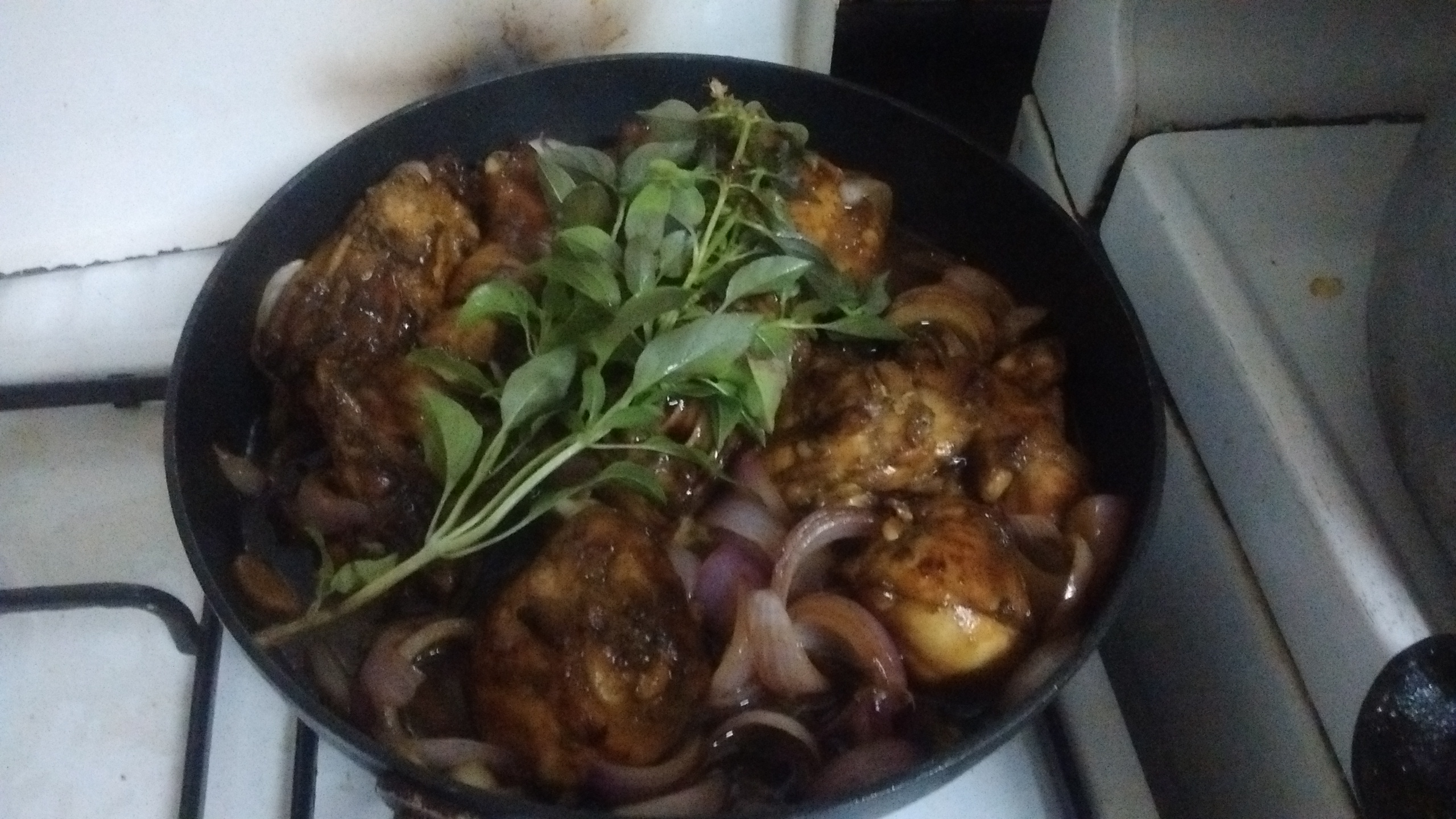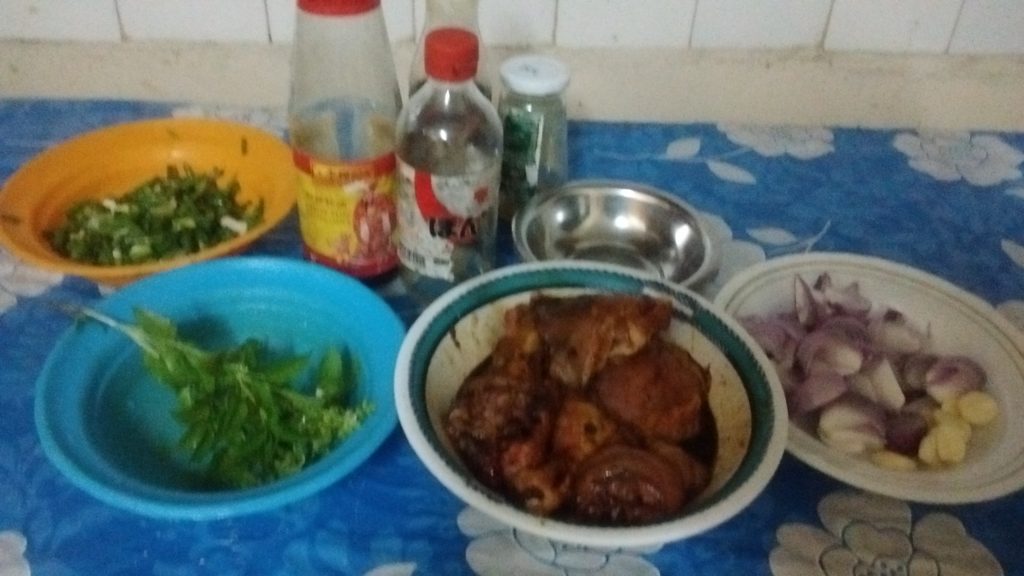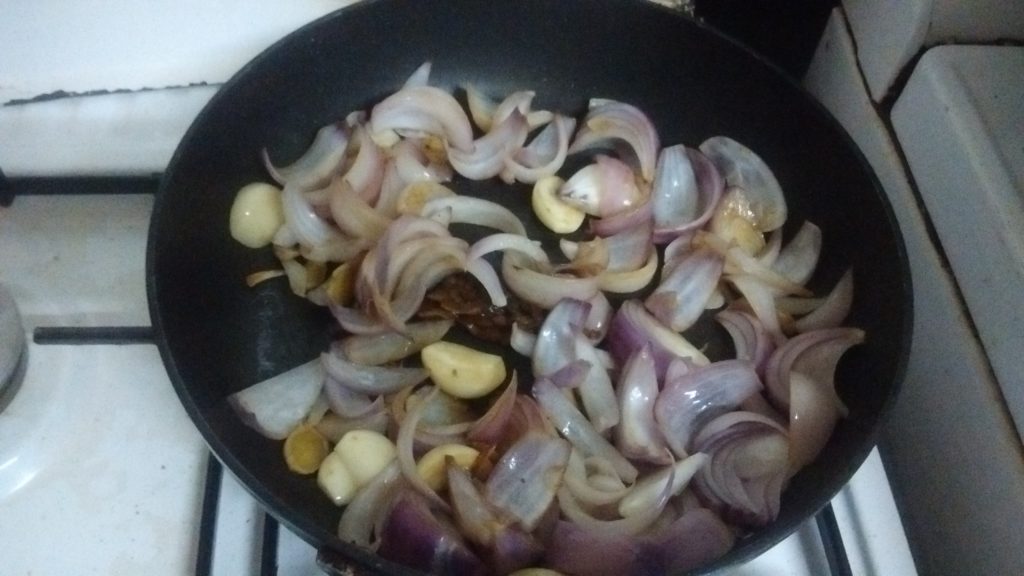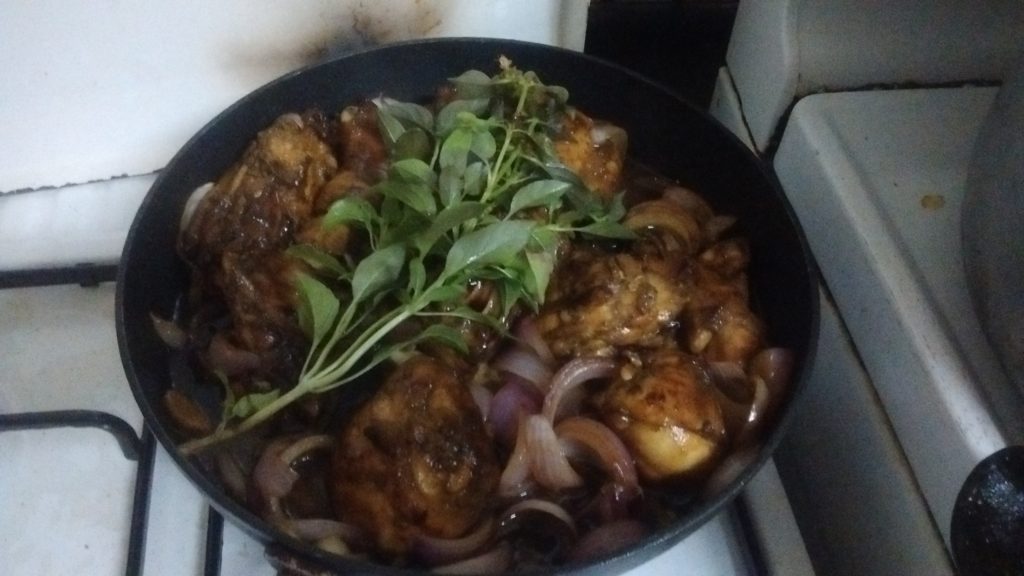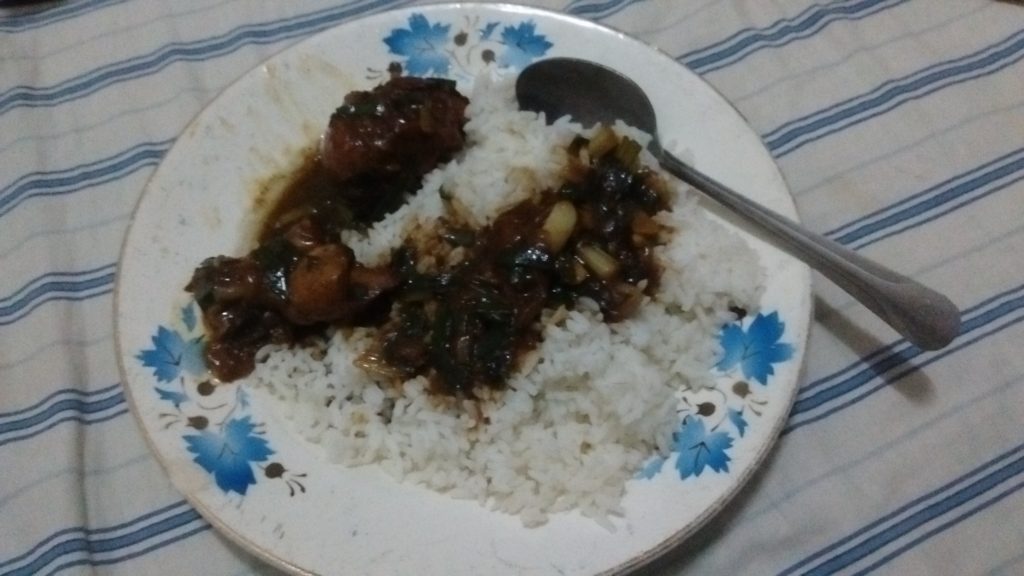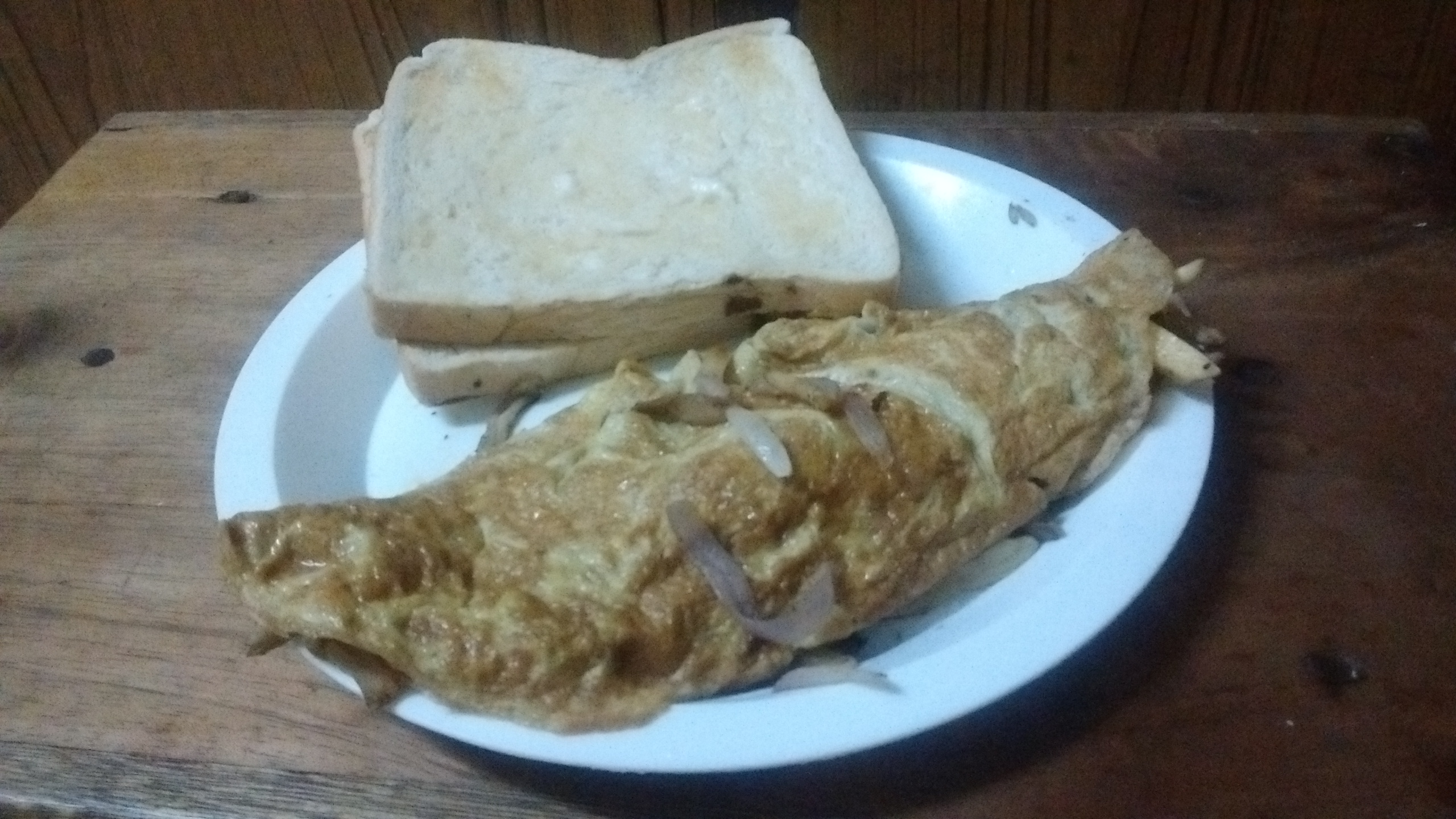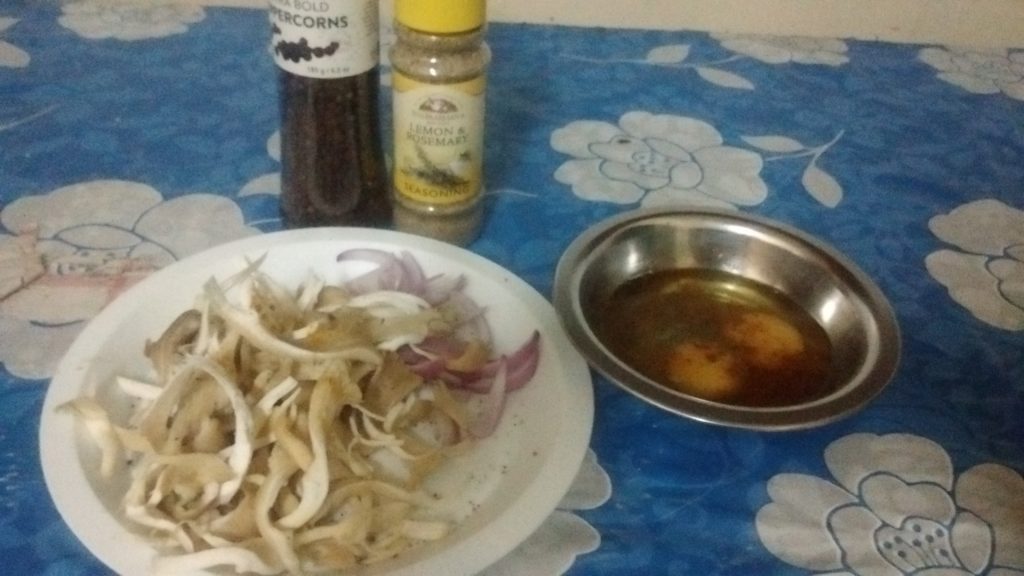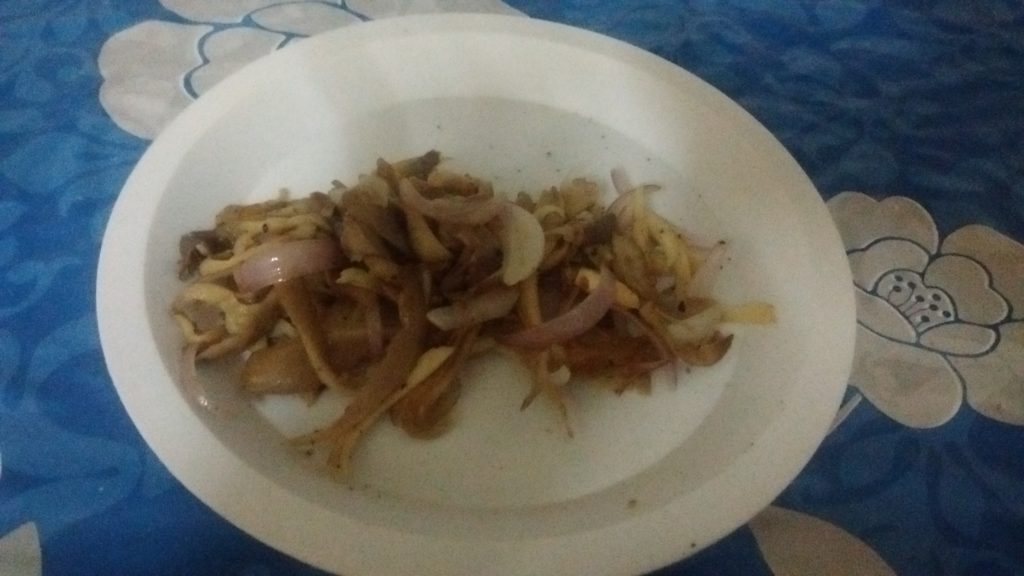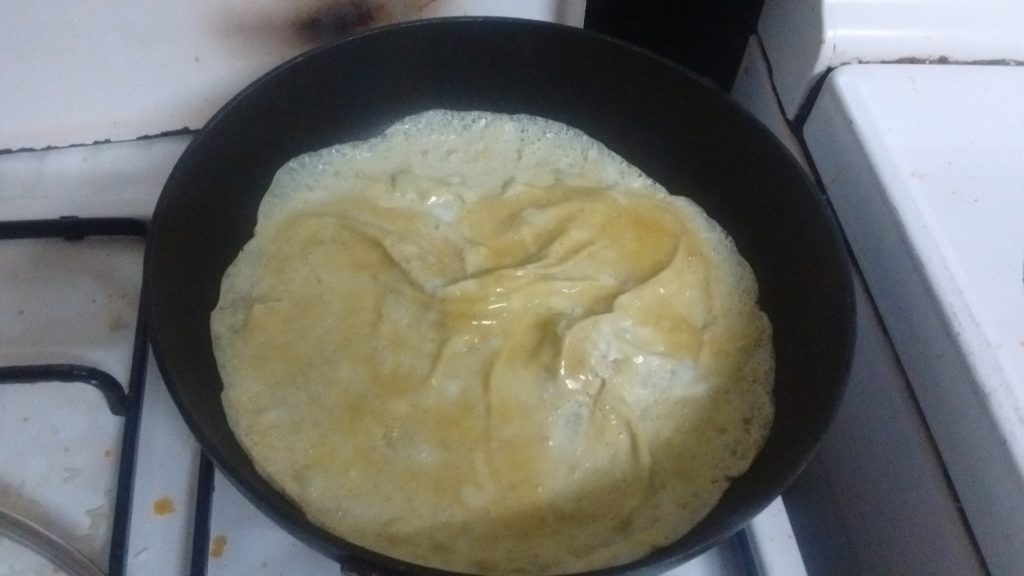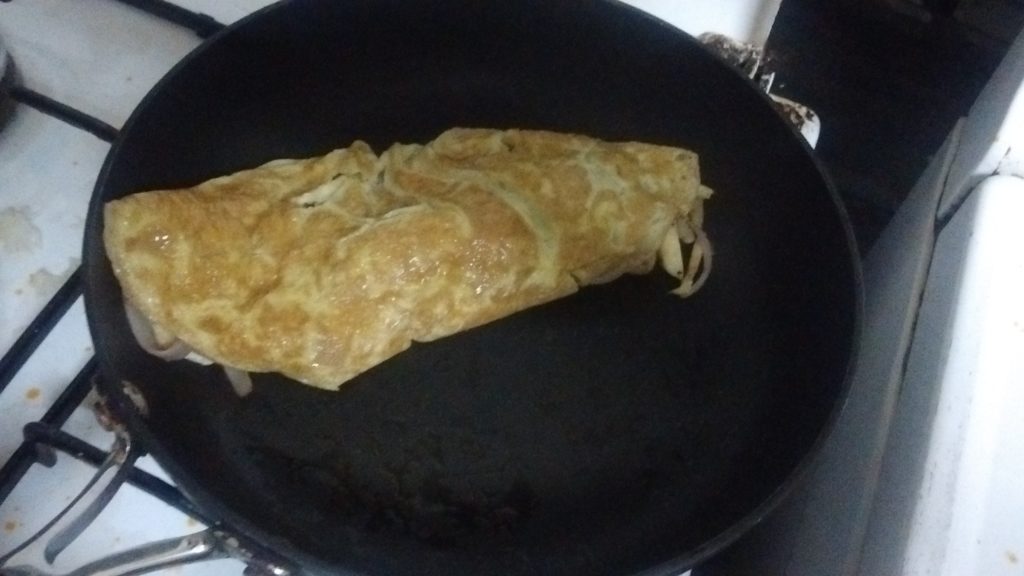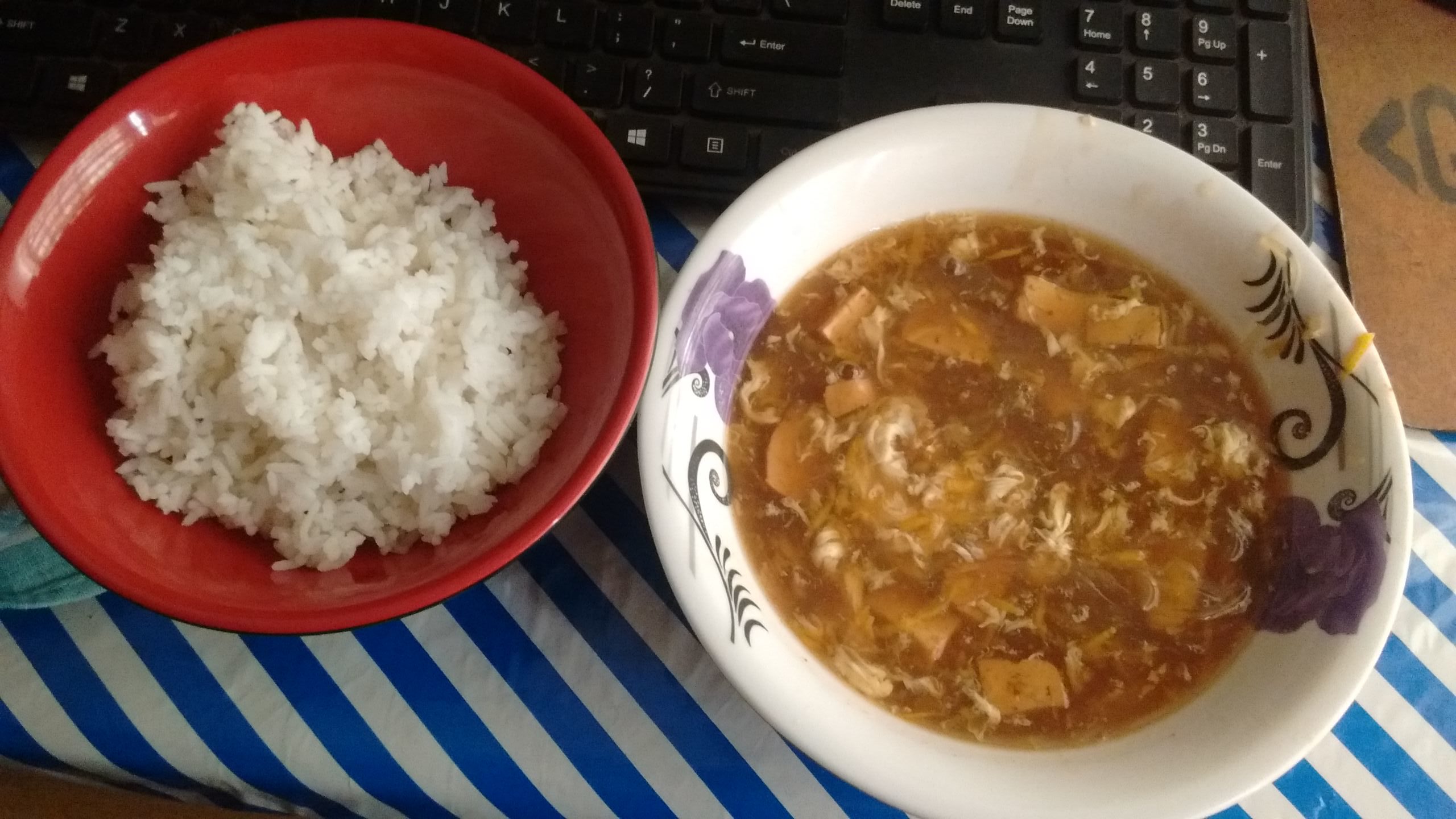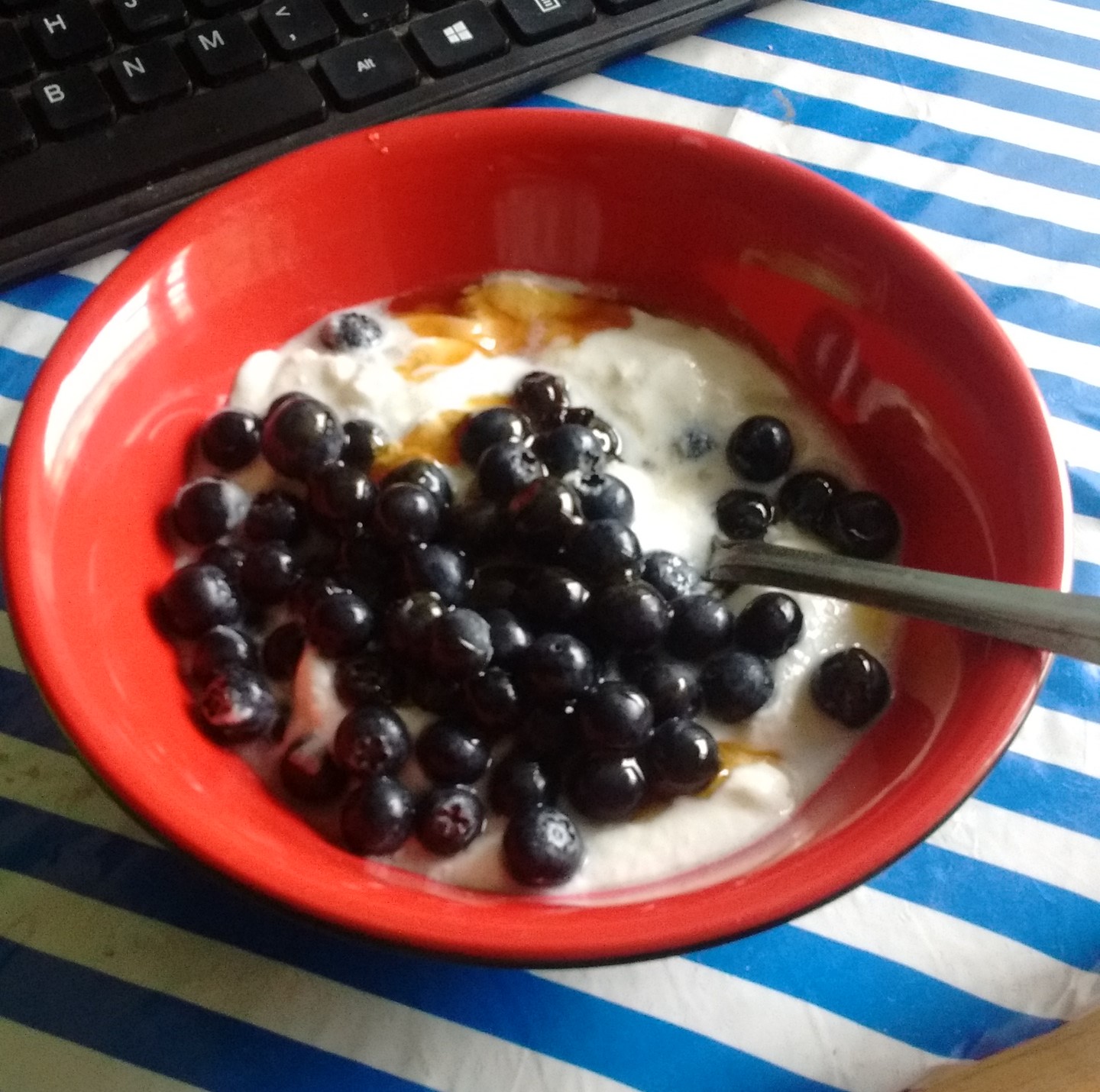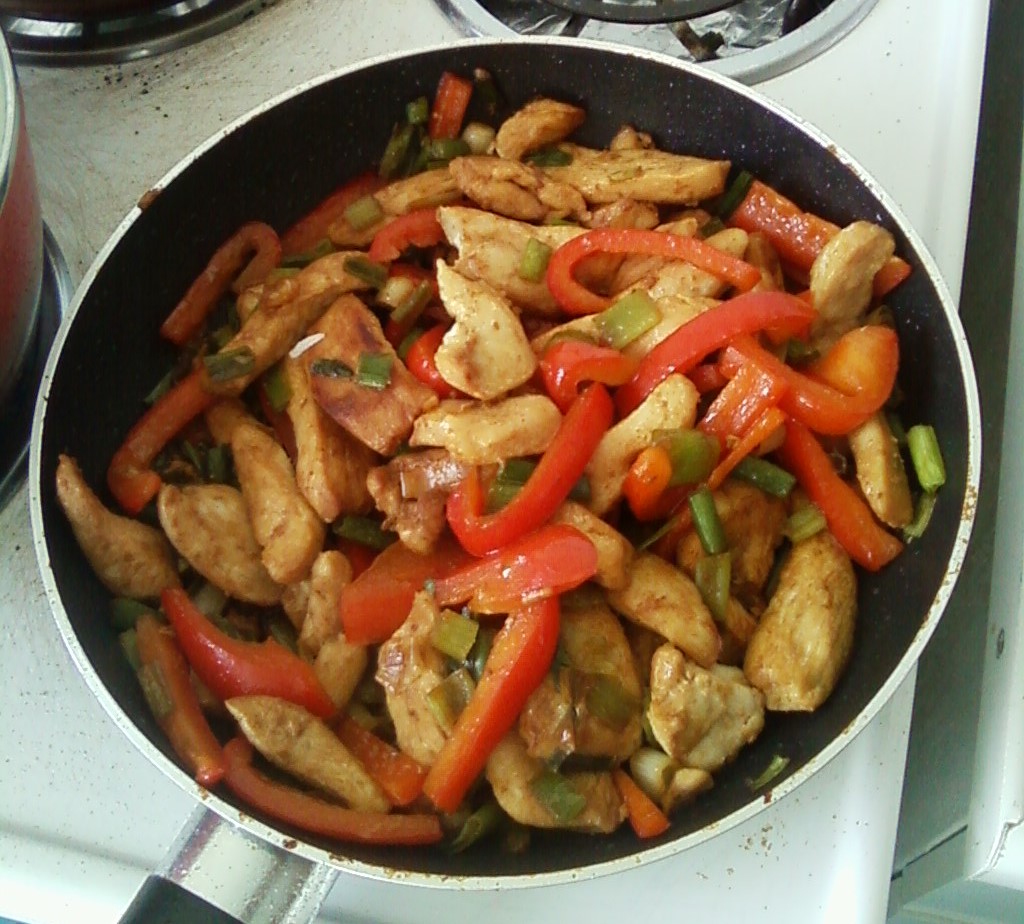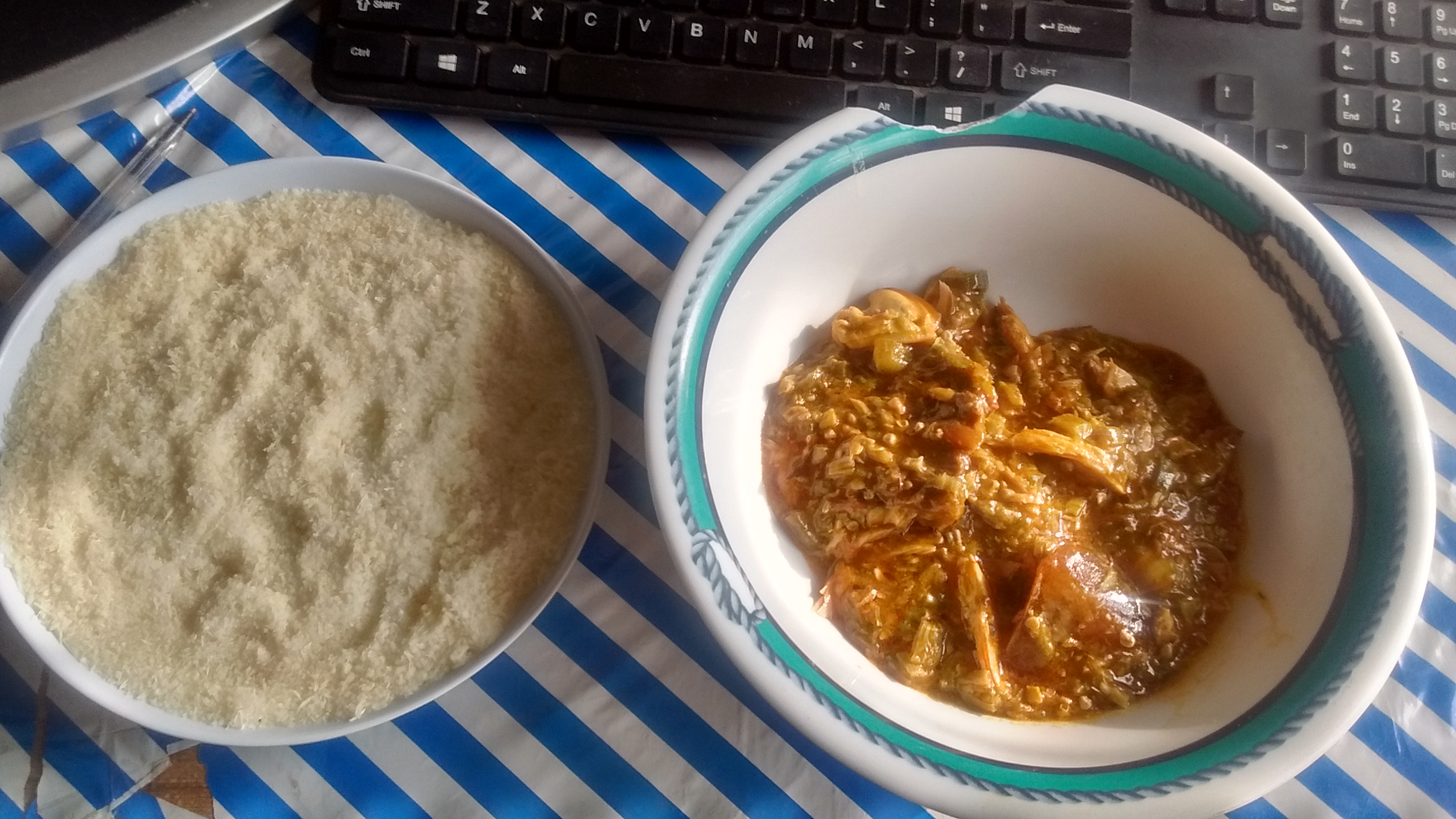In a previous post, I mentioned that I’ve been making all kinds of vegetable pancakes. I gave an example about zucchini pancakes and mentioned that I have pictures of others I’ve made. Today I finally got round to digging them out of my hard drive, so here they are.
First, scallion / green onion pancakes. Scallions and green onions are the same thing, depends on who you’re talking to. For just 1 cedi at Agbogbloshie you will get a ton of them, and they’re good for cooking fried rice, adding to an omelet, making various stir fries, etc. But when they’ve been in the fridge for a while and you’re out of ideas, just chop them up small, add flour, salt, pepper and fry them up as a pancake.
Green onions burn easily, but they taste fine even when browned like this, so it’s no big deal. TBH the taste of these scallion pancakes is a bit bland, so you’re better off making Chinese-style crispy pancakes with the same ingredients. Either that, or add other ingredients to make this a more exciting dish. But for a quick and easy breakfast, this is one of my commonly made ones.
Next, cabbage pancakes. I’ve only made them once, because they didn’t turn out looking too great. I think I got lazy and cut the cabbage into large pieces, so the whole thing came out chunky. If you want to make it, try shredding or mincing the cabbage really finely.
I’m seeing some flecks that suggest I added some chili pepper flakes and maybe onion? Onion really lifts these pancakes to the next level, so add a little if you can.
First, the correct way to fry cabbage pancakes, or any pancake with chunky ingredients. A little bit at a time, and slowly so that the heat goes all the way through. The cooked batter will still be soft, but it will be cooked all the way through. And you will get a vaguely presentable-looking pancake. Now for the wrong way to cook cabbage pancakes:
A certain lazy and greedy food blogger put a heaping amount of batter in the pan because she was hungry and wanted to finish frying quickly. Unless you’re a master of flipping pancakes, it will all fall apart when you try to turn it over. AND it will still take forever to cook.
Exhibit B. Nicely browned, and almost completely cooked. I thought I had flipped this picture before uploading it but I guess I messed up somehow. In retrospect, instead of letting it fall apart like that, I should have deliberately divided it into four nice quarters.
The final result. It looks like a strange omelet, doesn’t it? But no, it’s a cabbage pancake. I think it would look better if it browned even more, but it’s been long eaten and digested so that’s that. I can’t remember what the sauce was, but based on the looks, I’m guessing it was chili oil, soy sauce and vinegar. When I put chili oil into the fridge, my house people think it is shitor, so they lap it up like soup. I’m thinking of making my own, but that’s a topic for another day.
In conclusion, I like veggie pancakes a lot, so I’ve been experimenting with different ingredients and ratios for a while. If you’re trying to get more vegetables into your diet, or if you just want to try something new, give them a try and see how they work for you.

